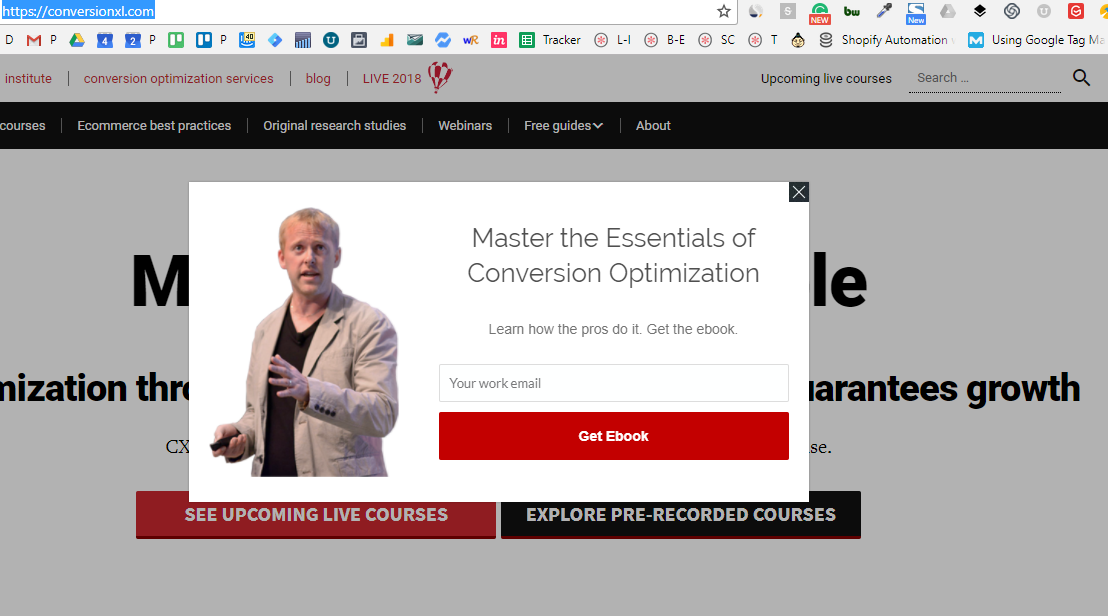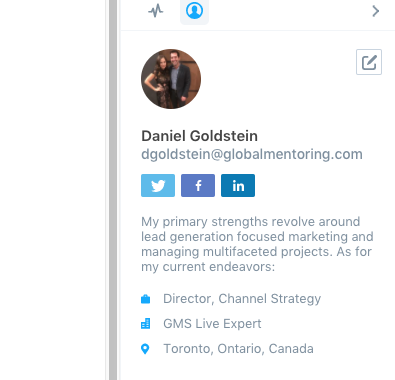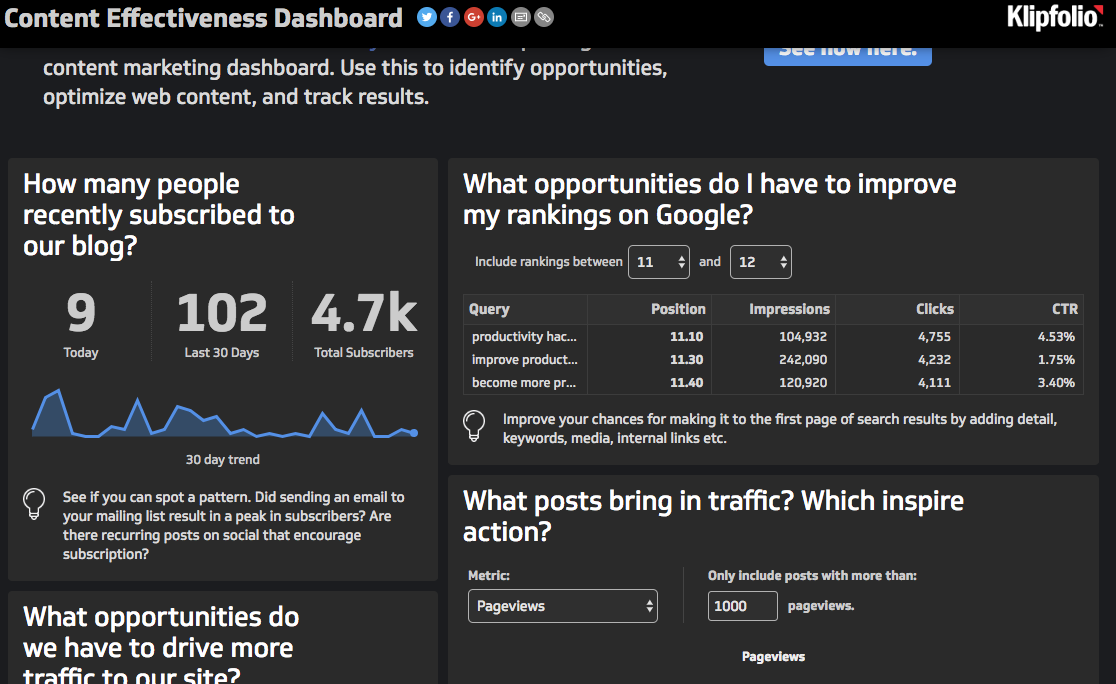As someone who actively tries to grow an MSP company, I’m sure you know this so well:
You cannot promote your company online without building a solid marketing stack first.
Whether you focus on SEO, social media or lead generation, you need tools to help you manage your campaign.
The problem? With so many marketing channels and strategies, it’s almost impossible to:
- Know what marketing tools can help achieve specific objectives, and then,
- Choose the right ones to reach your goals.
That’s why we decided to help. In this post, you’ll find a list of all marketing tools to help you with:
- Brand management and traffic generation,
- Lead generation,
- Sales management, and
- Business performance.
Let’s begin.
Brand Management and Traffic Generation
The starting point for any MSP marketing strategy is attracting visitors to the site.
After all, the more potential leads your marketing pulls in, the greater your chance of converting them into customers.
Many strategies help achieve this objective. Social media, SEO, content or social media advertising, to name a few.
And to manage them, you need to consider using the following tools:
#1. A social media management app.
Social media delivers undisputable results. LinkedIn, Twitter and other networks help generate engagement, traffic, and direct conversations with potential customers.
However, managing your social media presence can quickly become overwhelming. That’s especially true if you use each network’s native platforms to post and respond to comments.
Social media management apps help you:
- Manage your social media presence from a single interface,
- Engage with your online community,
- Create a comprehensive social media posting schedule,
- Repurpose existing content,
- Automate many tasks, for example, repost blog content automatically.
You can choose from many social media management apps. However, the most popular ones among businesses include Hootsuite, Buffer and Sprout Social.

#2. An SEO Platform
Fact: Search engine optimization is one of the most complex disciplines of the digital marketing.
For one, so many elements affect your search visibility. From choosing the right keywords, managing a clean link profile to monitoring rankings.
To manage it all, you need a comprehensive product capable of delivering the right data. Some of the most critical capabilities of your SEO platform should include:
- Ability to research new keywords and find new phrases to rank for,
- Analyze competitor’s keywords to find potential opportunities,
- Audit your site for errors,
- Backlink analysis to a.) ensure you don’t have toxic links pointing to your site and b.) spot potential competitor’s links you could recreate.
- Rank tracking to monitor your website’s positions for target keywords.
The SEO tools market offers many platforms. At GMS, we’ve grown fond of Ahrefs, SEMrush, and Serpstat. However, many other tools can deliver similar functionality as well.

(SEMrush’s report showing results for the keyword, “IT Consultant”)
Lead Generation
To successfully generate new leads from the website you need to a.) pull more people closer to your brand, b.) attract them to your site, and c.) convert them to your mailing list.
And for that, you need to:
- Publish relevant content (optimized for SEO, that’s another area where a solid SEO platform will come in handy),
- Create lead generation assets to convert them to your email list, and
- Use email marketing to communicate with the list further.
So, let’s look at each of those areas in turn:
#3. Content Marketing
The key issue in content, aside from creating it, of course, is getting it in front of the right audience.
The starting point here is a blogging platform. You might already be using WordPress or a similar Content Management System (CMS) on your site already. If so, you have the ability to publish new blog posts, guides, and any other content types.
Alternatively, you could consider publishing your content to Medium. This free blogging platform allows you to push your content live quickly.
Secondly, you need a way to convert visitors. For that, you need to create landing pages optimized to convert visitors.
Your CMS might already offer such functionality. Alternatively, you could consider using dedicated landing page builders like Unbounce or Landingi.
Hubspot uses landing pages designed to convert visitors to leads. For example:

Another useful tool to convert visitors is a popup. Marketing popups are small notices that appear on screen at a predefined time, letting a user know about your offer. They look like this:

You could use them to move website visitors to your landing page or strategic content you use to convert them.
Some of the most effective popup builders include Wisepops or OptinMonster.
Finally, your content stack must include an email platform. You’ll use it to nurture leads until they are ready to engage with you.
The most popular email marketing platforms for small businesses are Mailchimp or Campaign Monitor.
Sales Management
Your marketing efforts lead to one outcome – more potential customers for your business.
However, you must also have a way to manage them in a sales process.
In particular, your marketing stack should include two tools:
- One to help you create and send professional-looking proposals, and
- Another one you’ll use to manage the entire customer relationship, the CRM.
#4. Proposal Software
Tools like Proposify help businesses create proposals at scale.
Particularly, if you issue many quotes often, you’ll appreciate the ability to use templates to speed up the process. Creating templates covering different types of projects you do will help you respond to quote requests fast. What’s more, your documentation will look professional.
And finally, you’ll be able to monitor whether your prospects have opened a proposal, what pages they viewed and so on.
#5. CRM
A CRM (customer relations management) platform provides companies with the means to a.) manage new opportunities, b.) access customer information and c.) forecast their sales.
CRM platforms differ in their functionality. Some, like Close.io or NutshellCRM, focus on managing customer conversations. Others, like OnePageCRM help companies manage their sales process. And some focus on data management. CapsuleCRM is a good example in this category.
If you work solo, you could consider using email clients with CRM functionality built it. Polymail, for example, offers access to customer data, along with the ability for outreach directly from the app.

Worth to note that most products like Polymail focus on email functionality. The CRM is only an add-on. And it’s often insufficient to replace a full-blown customer relationship management platform.
Select the CRM that works for your sales process. It’ll help improve your sales. Promise.
Business Management
Many of the tools above provide data and insights about your business’ performance. However, we recommend you also invest in a marketing dashboard to see all this data in one place.
Why, because, for one, many marketing strategies overlap. Your SEO strategy will affect content marketing. Content’s performance will have an impact on lead generation, sales and much more. Website traffic could reveal new opportunities and so on.
Seeing all data in one place will help you gain a birds-eye view of how your company’s growth.
Marketing dashboards like Klipfolio or Reportz allow you to track the most important marketing KPIs from a single location.

Sign up below to receive our monthly IT Services advice + other cool stuff straight to your inbox.